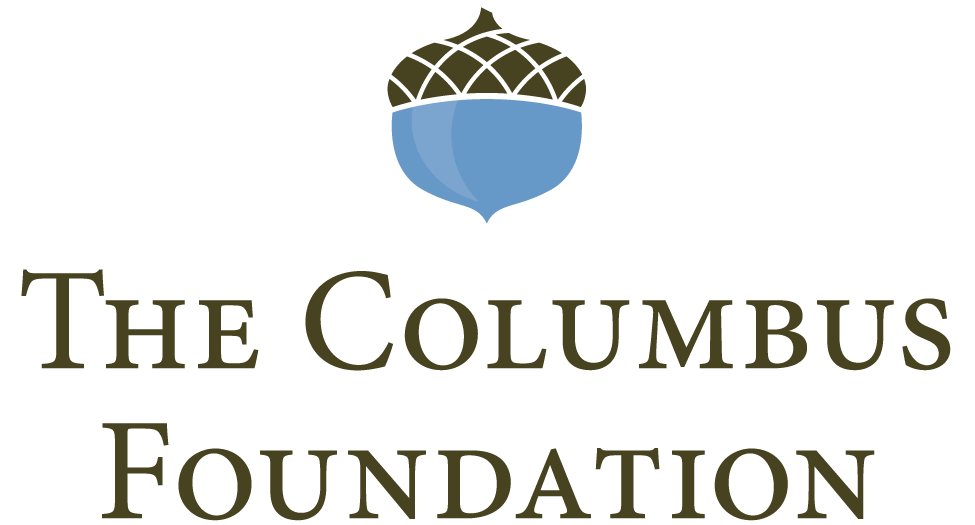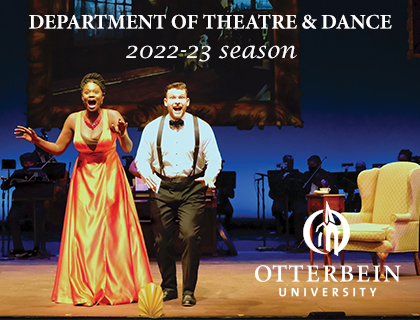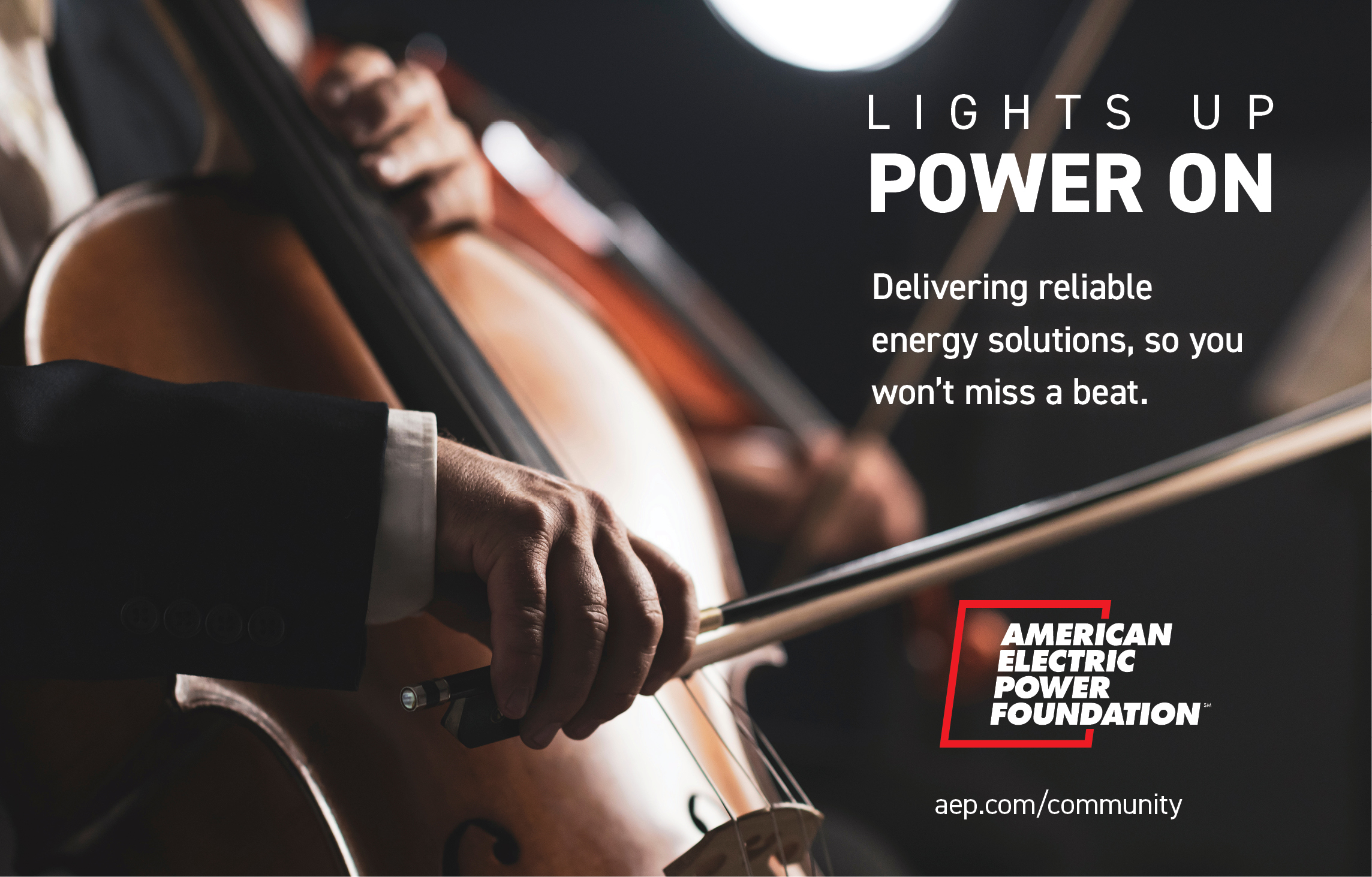
Dear Columbus Symphony Supporter,
Welcome to the Columbus Symphony’s 2022-23 Masterworks series! This will be a season of inspirational musical experiences featuring outstanding works, amazing soloists, and internationally acclaimed guest artists.
A true tour de force opens our season with Carmina Burana, September 30 and October 1. Carl Orff’s iconic work will come alive in full splendor and opulence with a grand orchestra and the magnificent voices of the Columbus Symphony Chorus and the Columbus Children’s Choir.
Following is Brahms & Dvořák, November 4-5, featuring pianist Shai Wosner performing Brahms’ monumental Second Piano Concerto. The program will also include Jesse Montgomery’s Starburst, which draws inspiration from music that surrounded her while growing up in New York’s Lower East Side, and Dvořák’s Symphony No. 6, inspired by Czech folk music.
The Mighty Morton Organ Festival, November 18-19, will showcase the return of iconic organ soloist Cameron Carpenter performing Francis Poulenc’s Concerto for Organ, Strings, and Timpani on the Ohio Theatre’s “Mighty Morton” organ, one of the best instruments of its kind in the country. The program will feature Carl Nielsen’s Masquerade Overture and Leoš Janáček’s rarely performed Glagolitic Mass.
The 2023 new year will be ushered in with the Winter Festival, January 6-7. Bulgarian violinist Bella Hristova will perform Prokofiev’s Violin Concerto No. 1 in a program that also features Rimsky-Korsakov’s Suite from The Snow Maiden and Shostakovich’s mysterious and defiant Symphony No. 6.
This season the Columbus Symphony embarks on its second year of the We are Here for You outreach initiative to advance our commitment to provide meaningful service throughout the central Ohio region and beyond. We continue to uphold the idea that accessibility to music and art can transform lives and play an integral role in developing a deeply connected citizenry that serves the greater good.
On behalf of the entire Columbus Symphony family, thank you for your exceptional support of our orchestra.
Please enjoy tonight’s performance!

Lisa Barton
Board Chair
Rossen Milanov, Music Director
|
VIOLIN I Joanna Frankel VIOLIN II Alicia Hui VIOLA Karl Pedersen CELLO Luis Biava BASS Rudy Albach FLUTE Joseph Niles Watson |
OBOE Hugo Souza CLARINET David Thomas BASSOON Betsy Sturdevant HORN Brian Mangrum TRUMPET Mark Grisez TROMBONE Andrew Millat TUBA Jonathan Fowler TIMPANI Benjamin Ramirez PERCUSSION Cameron Leach HARP Abigail Bachelor KEYBOARD Caroline Hong LIBRARIAN Jean-Etienne Lederer |

FRIDAY, JANUARY 6, 2023 | 7:30PM
SATURDAY, JANUARY 7, 2023 | 7:30PM
WINTER FESTIVAL
OHIO THEATRE
Rossen Milanov, conductor
Bella Hristova, violin
|
RIMSKY-KORSAKOV |
Suite from Snow Maiden I. Introduction |
|
|
PROKOFIEV |
Concerto No. 1 in D Major for Violin and Orchestra, Op. 19 I. Andantino |
INTERMISSION
|
SHOSTAKOVICH |
Symphony No. 6 in B Minor, Op. 54 I. Largo |
Additional Support Provided By:

Masterworks Hotel Sponsor
Media Sponsor
Feature Image Photo Credit: Randall L. Schieber
Suite from the opera Snow Maiden (1882)
by Nikolay Rimsky-Korsakov (Tikhvin, Russia, 1844 – Lyubensk, 1908)
Rimsky-Korsakov considered Snow Maiden (or Snegúrochka in Russian) to be the best of all his works—a statement that may come as a surprise, since the opera is largely forgotten today. The work’s length and its many vast, almost immobile tableaux pose considerable challenges to any contemporary stage director, yet the beauty and freshness of the music is undeniable. The four-movement suite the composer drew from the score can offer no more than a few highlights from this opera in prologue and four acts (and nothing at all of the highly expressive vocal writing for the principal characters).
Snow Maiden was an early example of a spoken play set to music (as opposed to an opera based on a libretto written expressly for a composer to use). The play in question was by the most important Russian dramatist before Chekhov: Alexander Nikolayevich Ostrovsky, known to opera lovers today as the author of The Storm, on which Janáček based his Káťa Kabanová. The realistic family tragedy presented in that work is more characteristic of Ostrovsky than this fairy-tale in verse set in prehistoric, pagan Russia, his only essay in that genre. (The play was first performed in 1873, with incidental music by Tchaikovsky.)
The Snow Maiden, daughter of Bonny Spring and Old Father Frost, longs to leave her forest home and live in a human community. That community, the Berendeys, welcomes her and her beauty soon attracts a wealthy suitor; the Snow Maiden, however, has a heart of ice and is incapable of love. Only towards the end of the opera—after a series of events too long to be recounted here—is she granted that gift but, being made of snow, she melts away when exposed to the rays of the sun. Her death placates Yarilo, the Russian sun god, who had been withholding his blessings from the Berendeys but now reappears, to grace the land with his life-bringing warmth once again.
Rimsky-Korsakov incorporated many Russian folk melodies in the opera, both from his own collection and from other sources. Some of these were already alluded to in the play where Ostrovsky quoted their lyrics. In his autobiography (My Musical Life), Rimsky-Korsakov wrote at length about the folk-music sources he had used, also venting his indignation at the critics who failed to recognize that some of the melodies in folk style were in fact by him.
The four-movement suite opens with the prelude to the opera. The first scene (actually, the Prologue) takes place in the forest. The stage directions read: ‟Early spring, midnight. In the distance, roosters are crowing. Leshi [the Forest Sprite] is sitting on a stump. Birds arrive. Bonny Spring descends from the sky.”
For this idyllic nature scene, Rimsky-Korsakov composed an atmospheric slow movement dominated by a brief but very expressive motif played by the piccolo. This is followed by the dance of the birds (originally with chorus), which combines birdsong imitations with a merry folk- tune imitation.
In the last two movements of the suite, we meet some of the human characters in the opera. Tsar Berendey, a beloved and compassionate ruler, makes his entrance in a grand procession, surrounded by the dignitaries of his court. Then the skomorokhi, or buffoons, entertain everyone with their lively dance performance. Thus the orchestral suite largely bypasses the dramatic conflicts in the opera, focusing instead on the brighter moments in the story.
Violin Concerto No. 1 in D major, Op. 19 (1917)
by Sergei Prokofiev (Sontsovka, Ukraine, 1891 – Nikolina Gora, nr. Moscow, 1953)
When a pianist-composer writes a violin concerto, we must expect something unusual. After all, the composer is putting his or her own instrument aside to explore the ‟other”: whether the goal is to oblige an esteemed colleague, to fulfill a commission, or simply to try something new, the challenge to conquer a ‟foreign” medium often propels a composer’s stylistic evolution in surprising new directions.
When Prokofiev first sketched the romantic violin melody that would open the concerto, he was 24 years old and probably didn’t realize that the ‟ultra-left idiom” of the first two piano concertos, the Scythian Suite and the piano piece Sarcasms was about to be modified with a series of new compositions showing a ‟softening of temper.” (The words in quotation marks are Prokofiev’s own.) The Classical Symphony, on which he worked more or less simultaneously with the violin concerto, would soon confirm this tendency.
Since August 1914, Russia had been embroiled in World War I, but Prokofiev did not let that fact get in the way of his feverish compositional activity. He and his mother retreated to a small village in the Caucasus, where he became involved in a secret romance with a girl named Nina Meshcherskaya. Her wealthy family, however, refused to have anything to do with a young Bohemian artist like Prokofiev, and the relationship was forcibly broken off. The romantic melody that opens the Violin Concerto was first written down during those months.
Despite the war, Prokofiev managed a trip to Italy in 1915 at the invitation of Sergei Diaghilev, the legendary impresario who had begun to promote Prokofiev’s music. After an adventurous return to Russia, he wrote his ballet The Buffoon for Diaghilev and his opera The Gambler for the Mariinsky Theater (which did not perform it). He did not have a chance to return to the Violin Concerto until 1917, just after the February revolution put an end to czarist rule in Russia. Determined to be as far removed from the fighting as possible, Prokofiev took a long steamboat trip along the Volga and Kama rivers, venturing into distant tributaries near the Ural mountains. It was on the boat that he wrote and orchestrated most of the concerto.
Prokofiev initially wanted to write only a short ‟concertino” (presumably in one movement) on the theme jotted down in the Caucasus. In the end, he expanded the original concept to a full-fledged concerto, but the opening melody still plays a central role, figuring prominently both at the beginning and at the end of the work. It opens the first movement in a dreamlike fashion (Prokofiev instructs his soloist to play sognando, ‟as if in a dream”), with the solo violin over soft tremolos (fast repeated notes) in the violas. At the end of the movement, this theme will return in a shimmering orchestration, with the melody taken over by the flute, and the solo violin and the harp adding their magical filigrees. In between comes an extended virtuoso section, starting with a theme marked narrante (‟as if telling a story”). Starting quietly, the music builds up considerable rhythmic momentum until an unaccompanied violin passage, all in double stops, leads back to the opening melody.
The second-movement Scherzo (Vivacissimo) shows the author of Sarcasms at his most sarcastic. The ‟wild” Prokofiev is back, with a combination of relentless rhythmic ostinatos (repeated figures), spicy harmonies, and a level of technical difficulty bordering on the impossible. The ‟lyrical” Prokofiev then makes his return in the last movement that, contrary to expectation, is only moderately fast in tempo, and primarily melodic in its inspiration. The introductory theme, first played by the bassoon, later returns in the brass. The solo violin has lyrical melodies of its own. The undiminished level of virtuosity results from Prokofiev’s brilliant ways of embellishing those melodies, and from using the instrument’s highest register where, as every violin student knows, it is hardest to play in tune. At the climactic moment, there is a quite audible scene change—the effect is as if an inner curtain had suddenly risen on the stage—and we are back to the Romantic starting point of the concerto: the opening melody in an iridescent setting very close to the one that ended the first movement.
Prokofiev’s ‟lyrical” and ‟sarcastic” voices are easily distinguishable throughout the concerto. The composer himself, discussing his own style in his autobiography written late in life, identified no fewer than four distinct strands. In addition to the lyrical side, he mentioned the ‟innovative,” which more or less covers what the world has perceived as ‟wild,” ‟barbaric,” or ‟sarcastic.” In addition, the composer listed the ‟toccata-like” character, which involves driving motoric rhythms, and the ‟classical,” as developed most perfectly in the Classical Symphony. It is not hard to discern all four strands in the First Violin Concerto. The ways of writing introduced here would echo through Prokofiev’s works for years to come—not least in the Second Violin Concerto, written twenty years later.
Symphony No. 6, Op. 54 (1939)
by Dmitri Shostakovich (St. Petersburg, 1906 – Moscow, 1975)
At age thirty-one, Shostakovich was the author of five completed symphonies, two of which (Nos. 1 and 5) had been enormously successful and had secured him a solid reputation as the best young composer in the Soviet Union. Or, to be more exact: the First Symphony had catapulted him to fame at 19, and the Fifth had reconfirmed his status after the traumatic events of 1936, when Shostakovich's opera Lady Macbeth of the Mtsensk District was brutally attacked by the Communist Party.
Shostakovich's first major work after the Lady Macbeth debacle, the Fifth Symphony, was officially described in an article that appeared under the composer's name, though he may not have actually written it, as “A Soviet Artist's Response to Just Criticism.” Whether or not this description has any merit, there is no doubt that the Fifth is a symphony of classical proportions, its four movements fulfilling their traditional roles of building up tension or resolving it (or pretending to resolve it, if one prefers). It follows what is essentially a Beethovenian pattern, and its dramatic evolution from tragedy to triumph is indebted to Beethoven's Fifth (as well as the other celebrated Fifths ofTchaikovsky and Mahler, each with its own links to Beethoven.)
The Sixth Symphony follows a different course altogether, and this has given critics and commentators quite a few headaches ever since the premiere. Yet this three-movement structure, consisting of a huge opening Largo followed by two shorter fast movements, has a definite logic of its own, even if at first hearing it may seem strangely lopsided. Although the second and third movements have their own darker moments, they seem more to negate the first movement than to complement or transform it. If the symphony is “about” anything, it must be the clash of two mutually exclusive worlds.
The times in which Shostakovich's Sixth was written were themselves full of irreconcilable contradictions. Amidst much official talk about the glorious new society created by the Communist state, Stalin was in fact decimating his own country, executing untold millions out of a paranoid fear of any opposition. Among the victims were some of the most talented artists, political and military leaders in the country, including such personal friends and collaborators of Shostakovich as Marshal Mikhail Tukhachevsky, a senior Army officer, and the great stage director Vsevolod Meyerhold. No one could even mention these atrocities without risking his or her own life. In addition, when Shostakovich was halfway through the composition of his Sixth, the world lived through the ultimate tragic paradox: Germany and the Soviet Union, quite unbelievably, signed a non-aggression pact that at first looked like a peaceful move; yet within three weeks, both the Nazis and the Communists had invaded Poland and World War II was underway. Seen in this light, the ambivalence of the Sixth Symphony takes on an entirely new meaning.
The opening, a broad melody that at first has no accompanying harmonies at all, has a strong Russian flavor, and sounds like a personal plea. It is soon answered by a second, equally doleful theme, which has been called “Bachian” on account of its prominent descending leap of a diminished seventh, an interval favored in Baroque music. This theme is presented in turn by violins, a group of low-pitched instruments (bass clarinet, bassoon, contrabassoon, double bass), immediately followed by the highest one, the piccolo, in another unlikely juxtaposition of opposites. The two themes are then combined as the tension grows and finally explodes with the powerful entrance of the brass.
A hesitant new theme, played by the English horn, introduces a new section. Aside from a single brief tutti outburst, the rest of the movement is pure chamber music. One instrument or instrumental group after another “speaks up” at this intimate communal “wake,” at the center of which stands a remarkable flute cadenza that makes time stand still for a moment. A return of the first theme, accompanied this time by dark, warm harmonies, leads to a subdued coda.
In the second-movement Allegro, the fun begins with a gleeful and virtuosic solo of the high-pitched E-flat clarinet. The scherzo from Mahler's Second Symphony, based on the song “St. Anthony of Padua's Sermon to the Fishes,” must not have been far from Shostakovich's mind when he composed this music. The rollicking sixteenth-notes gradually become more insistent: a fortissimo passage, dominated by an agitated trumpet fanfare, comes close to destroying the scherzo mood. But the clouds disappear as fast as they came, and the initial music returns, with flute and piccolo now taking the place of the E-flat clarinet. A second dark episode follows, even more menacing than the first. The rhythm becomes more irregular, and the sound colors more sinister. But once again, the crisis passes, and—after a timpani solo serving as transition—the scherzo returns for the last time, with the addition of a new, extended solo for piccolo. The memory of the dramatic episodes continues to linger under the surface right to the end.
The last-movement Presto begins as “light cavalry,” with a string of humorous themes that suggest unbridled good spirits. But again, the music becomes quite dramatic towards the middle of the movement. There is even a bassoon solo in the minor mode that for a fleeting moment evokes the first movement. Shortly thereafter, a violin solo brings back the cheerful mood as a regular recapitulation section begins. From here on, there is no stopping the boisterous fun, but it is for each individual listener to tell whether Shostakovich is really letting his hair down or is making a sarcastic comment. Music critic Paul Griffiths has written about the “ambivalence of enforced statement (joy, progress, affirmation) and dissident subtext (i.e. 'Don't you believe it').” This goes a long way towards explaining the unusual features of Shostakovich's Fifth Symphony which, it seems, expresses the troubled times of its genesis even it is structural layout.
Peter Laki


















